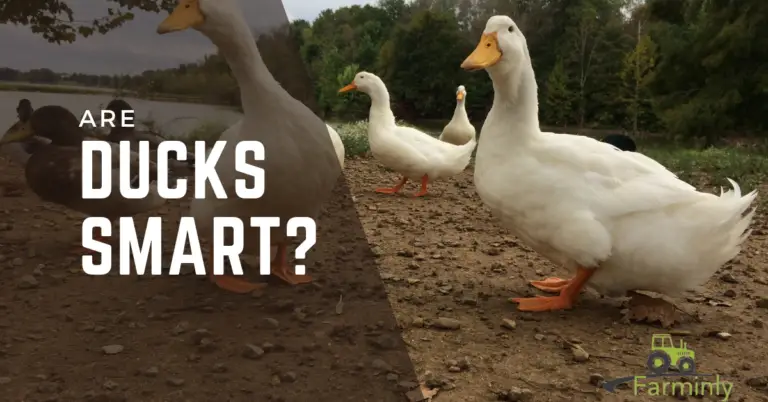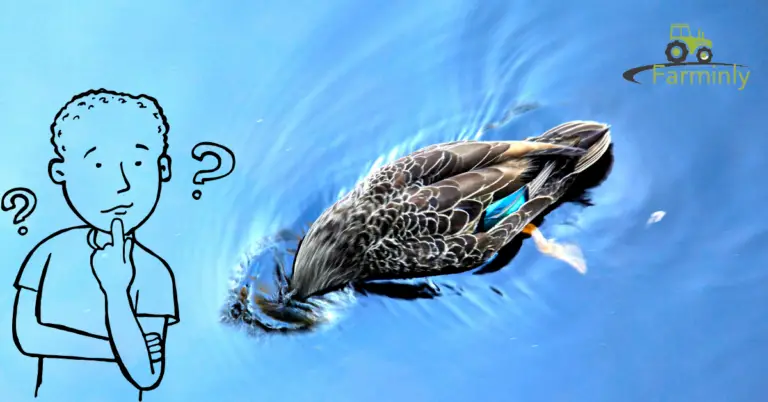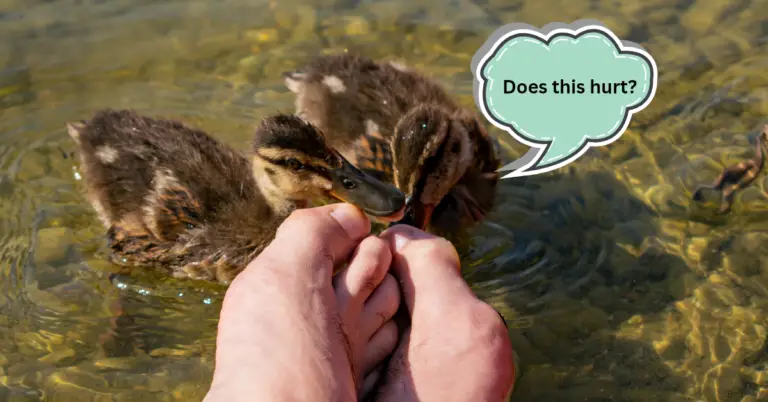Have you ever wondered if ducks eat tadpoles? It’s a common question, and the answer is not as straightforward as you might think. In this article, we’ll explore the relationship between ducks and frogs and answer the question. Just keep reading!
Ducks’ diets can be quite diverse, and their food choices may vary depending on the availability of prey items in their habitat. Ducks are opportunistic feeders who consume whatever food is available and easiest to obtain.
Do Ducks Eat Tadpoles?
The short answer is yes; ducks do eat tadpoles. However, this is not the whole story. Ducks are omnivorous birds, meaning they eat a wide variety of foods, including plants, insects, fish, and other small animals. While they do eat frogs, they don’t make up a large part of their diet.
Ducks will eat frogs if they can catch them. They are skilled hunters who often wade through shallow water to search for prey. Frogs are an easy target for ducks because they are slow-moving and can’t fly away. Ducks will also eat frog eggs and tadpoles, which are easier to catch than adult frogs.

The Relationship between Ducks, Frogs and Toads
While ducks eat frogs and toads, the relationship between the two animals is more complex than a simple predator-prey relationship. There are several ways in which ducks and frogs interact with each other.
1. Competition for Resources
Ducks and toads compete for resources in wetland habitats. Both animals rely on the same food sources, such as insects and small fish. This competition can lead to conflicts between the two species, each trying to outcompete the other for resources.
2. Mutual Benefits
Despite their competition, ducks and frogs can benefit from each other’s presence. Frogs provide food for ducks, while ducks help control the populations of insects and other small animals that frogs rely on for food.
In addition, ducks can help keep wetland habitats clean by stirring up sediment and promoting water circulation, which benefits frogs and other aquatic species.
3. Habitat Destruction
One of the biggest threats to both ducks and frogs is habitat destruction. Wetland habitats are disappearing at an alarming rate due to human activities such as land development and pollution. This habitat loss can have serious consequences for both species, including a population decline and increased resource competition.
Risks of Ducks Eating Frogs
While it’s true that ducks can eat toads, there are also some risks that frogs can pose to ducks. Here are some examples:
1. Poisonous Frogs
Some species of frogs are poisonous and can be harmful or even deadly to predators, including ducks. Poison dart frogs, for example, secrete toxins through their skin that can cause paralysis or death in predators. While ducks are not their primary prey, they can accidentally ingest poisonous frogs while hunting for other prey in the same habitat.
2. Disease Transmission
Frogs can also carry and transmit diseases that can affect ducks. Chytridiomycosis, a fungal disease that affects amphibians, can be spread by direct contact between frogs and ducks or through contaminated water sources. The disease can cause skin lesions and be fatal to frogs and ducks.
3. Competition for Resources
As mentioned, ducks and frogs can compete for water resources in wetland habitats. While this competition does not pose a direct risk to ducks, it can decrease food availability and quality, negatively impacting duck populations.
While frogs may not pose a significant threat to ducks, some risks are associated with their interactions. It’s essential to consider these risks when studying the ecology of wetland habitats and managing their conservation.
Benefits of Ducks Eating Frog Spawn

Despite the potential risks that frogs may pose to ducks, there are also several benefits that they can provide. Here are some examples:
1. Food Source
Tadpoles are a food source for many species, including ducks. As mentioned earlier, ducks are omnivorous and will eat various foods, including frogs, tadpoles, and eggs. The consumption of frogs and their eggs can provide ducks with essential nutrients and energy.
2. Pest Control
Many species of frogs feed on insects and other small animals, which can be considered pests in agricultural and natural settings. Toads can help control their populations by consuming these pests, indirectly benefiting ducks and other species.
3. Wetland Health
Frogs are an important indicator of wetland health. Their presence and abundance can indicate the quality of the habitat, as they are sensitive to water quality and quantity changes. A healthy wetland ecosystem can benefit ducks by providing suitable habitats and food sources.
4. Ecological Diversity
The presence of frogs in wetland habitats can contribute to ecological diversity. By providing a diverse range of prey species for predators such as ducks, wetland ecosystems can be more resilient to disturbances and support more species.
Other Insects/Reptiles That Ducks Eat in the Wild
Ducks are omnivorous birds and will eat various foods, including plants, insects, fish, and other small animals. Here are some examples of other reptiles and insects that ducks may eat:
- Snails: Ducks eat snails, an important food source in some wetland habitats.
- Fish: Ducks are known to eat fish, especially in aquatic habitats. Ducks often dive underwater to catch fish or feed on them at the water’s surface.
- Insects: Ducks will consume insects, including beetles, grasshoppers, dragonflies, and mosquitoes. Insects can provide ducks with essential nutrients, such as protein and fat.
- Worms: Ducks will also eat worms, which can be found in soil and mud around wetland habitats.
- Lizards: While not as common as some of their other prey items, ducks have been observed eating lizards, including geckos and skinks.
- Small snakes: Ducks have been known to eat small snakes, such as garter and water snakes, which may be found in and around wetland habitats.
Important Things to Note
Ducks require a diet high in protein and nutrients to maintain their health and optimal growth. A diet deficient in these essential nutrients can lead to health problems and growth retardation. Therefore, it is crucial to understand the nutritional requirements of ducks and provide them with a balanced diet that meets their needs.

1. Monitor The Number Of Frogs
Frogs can be a valuable source of protein for ducks, but they should not make up most of their diet. It is essential to monitor the number of frogs that ducks consume and ensure that they are not eating too many. Overconsumption of frogs can lead to an imbalance in their diet, resulting in health issues.
2. Provide A Balanced Diet
In addition to frogs, ducks should have access to various other foods to meet their nutritional needs. A balanced diet for ducks typically includes a mix of grains, vegetables, and protein sources, such as insects or fish.
3. Limit Access To Frogs
One way to moderate the intake of frogs for ducks is to limit their access to them. If there is a pond or other area on the property where frogs are abundant, consider fencing off that area to prevent ducks from overindulging. Alternatively, you can control the frog population to limit their availability to the ducks.
4. Consult with A Veterinarian
If you have concerns about the number of frogs your ducks consume or if you notice any health issues, consult a veterinarian. They can advise how to balance your ducks’ diet and prevent any adverse effects from the overconsumption of frogs.
Conclusion
While ducks eat frogs and tadpoles, the relationship between the two animals is more complex than a simple predator-prey relationship. Ducks and toads compete for resources in wetland habitats but can also benefit from each other’s presence.
The biggest threat to both species is habitat destruction, which highlights the importance of preserving wetland habitats for the benefit of all species.
References






